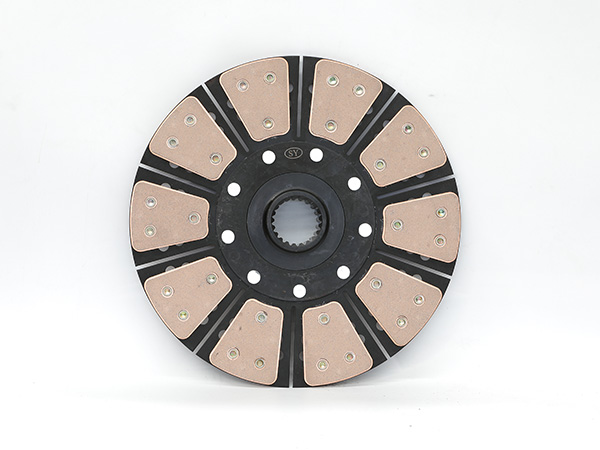The clutch is an essential and important part on the tractor. The clutch gradually engages the engine with the driveline, ensuring a smooth start of the tractor. When the transmission needs to change gears according to the driving of the tractor, the clutch can temporarily cut off the power transmission of the engine to ensure the smooth shifting of the transmission. The clutch also has overload protection, preventing damage from overloading the driveline and PTO by slipping the friction linings.
However, during the use of the clutch, due to natural wear and improper use and operation, the wear of the clutch transmission mechanism and the wear of the friction plate cause the clutch to slip during the operation of the tractor, and the clutch is not completely separated, which affects the normal use of the tractor. Therefore, the clutch should be used correctly during use, and maintenance and adjustment should be carried out in time to reduce the incidence of damage to the tractor clutch and prolong the service life.
1. Correct use of clutch
When driving a tractor, when operating the clutch, the disengagement should be quick and complete, and the engagement should be smooth and soft.
When the tractor is working, do not put your foot on the clutch pedal, let alone control the speed of the vehicle with a half-clutch method. Immediately after the clutch is engaged, take your foot off the pedal to avoid the clutch being half-engaged. Use the clutch reasonably, and do not use the method of slamming the clutch to overcome the trapping, overloading and overcoming obstacles. The tractor should not start with a high gear with a load, it should be in a low gear first, and then change into a high gear after starting.

2. Correct adjustment method of clutch
During the use of the clutch, due to the wear and tear of the parts, the clutch will slip or the clutch will not be completely separated. Therefore, it should be adjusted in time. In order to make the clutch work normally, it is necessary to ensure that there is a clearance of 2-3 mm between the release bearing and the inner end faces of the three release levers. When the clutch pedal is depressed until the clearance is eliminated, the travel required by the lower end of the release rocker arm along the axis of the limit bolt is called “free travel”.



